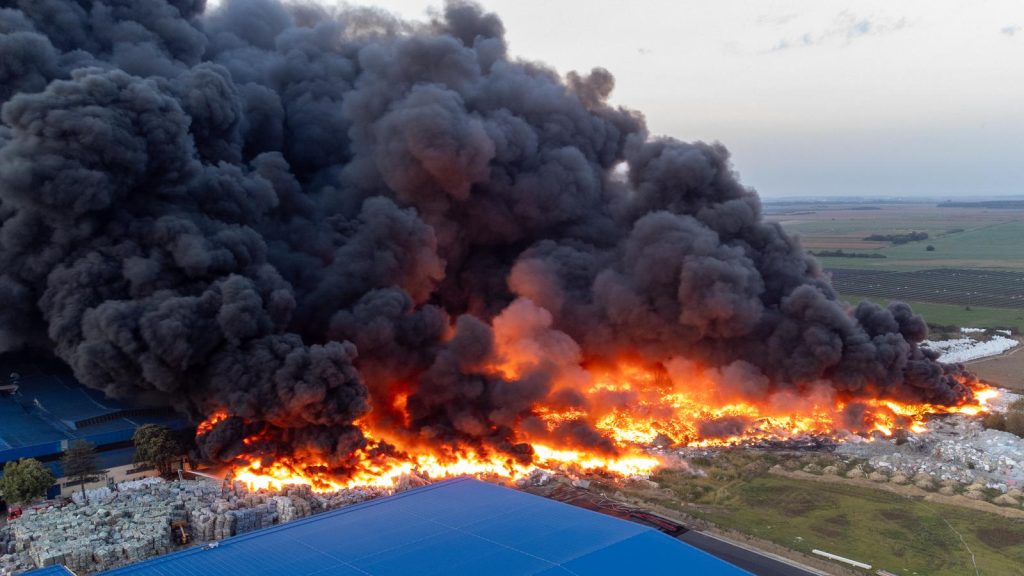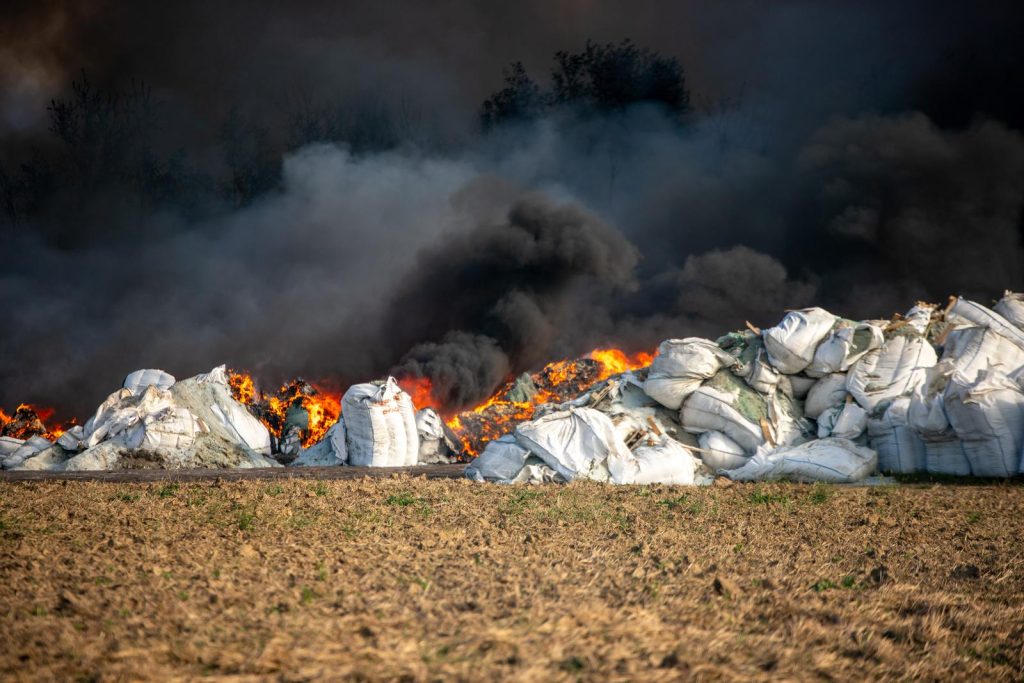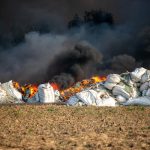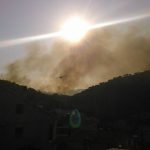October 6, 2023 – What is the state of the Osijek plastic depot fire three days on? Croatian civil protection reported that air quality measurements showed an increased concentration of floating particles.
Toxicologist Zdravko Lovrić said that for information about the damage caused by the plastic depot fire at the Osijek company “Drava International”, it is necessary to find out as soon as possible what types of plastic were in the landfill. He stated that people should stay outdoors as little as possible and use protective masks, writes Poslovni.
“As long as this smoke is in the air, it is recommended that they stay outdoors as little as possible and that they use the protective masks we used for COVID-19, FFP2, which serve to protect against particles. If you don’t have one, a medical or even a cloth mask will be good enough,” said toxicologist Lovrić.
As for the food that is grown in the fields and gardens in the area, Lovrić recommended that the citizens wash the food well if they are consuming it. For the time being, until extensive flue gas and soil analysis is done, the recommendation is to refrain from consumption.
Increased Concentration of Toxic Particles
Civil protection reported that after the big Osijek plastic depot fire, air quality measurements showed an increased concentration of floating particles and the presence of styrene and ethylbenzene at the fire site and in Antunovac, while the findings were normal elsewhere.
“I don’t have an exact insight into the direction of the wind blowing and at which points it was found, but if styrene and ethylbenzene were not found along the entire route of the wind blowing, that is, the movement of the clouds, then it may be questionable whether it all originated from that fire, but it is to be assumed so,” he said.

Ethylbenzene is usually included in fuel, such as gasoline.
“It is BTXs, as they are popularly called, benzene, toluene, xylene and ethylbenzene. These are flammable liquids, harmful to health, but with insignificant effects, so they do not pose a problem,” he explained.
He added that it is probably a question of very low concentrations, and inhalation may eventually lead to certain irritations and digestive disorders.
The situation is similar for styrene, which can irritate the eyes and skin, while in high concentrations, there is a suspicion that it can be reprotoxic. At the moment, however, we cannot talk about this at all, given the low concentrations in the air.
Lovrić said that there is currently no great danger for citizens from those two compounds, but he cannot say whether anything else is dangerous.
“We still do not have an absolutely accurate composition, that is, which plastics were present at the location and which potentially dangerous combustion products could be created,” he explained.
What we know for sure could happen, he added, given that it was PET packaging, polyethylene, polypropylene, which are hydrocarbons that contain only hydrogen, carbon and oxygen, is carbon dioxide, possibly a little monoxide and water vapor.
Microparticles Could Cause Irritation
“However, given the color of the smoke, it can still be assumed that something else was burning because there are certainly other waste materials that are not only plastic. Different microparticles such as soot and other combustion products were formed, which can be harmful to the respiratory system,” Lovrić said.
If excessive inhalation occurs, irritation of the respiratory system, irritating cough, throat and eye irritation, etc. may occur, in which case it is necessary to seek help from a healthcare facility.
Asked how all this affects the environment, food, water and animals, considering that these floating particles will fall to the ground, the toxicologist said that there is no problem regarding styrene and ethylbenzene. He did emphasize that it is necessary to find out the composition of the plastic that was there so that one could see what else could possibly be in the air.
“Yesterday, there was a lot of talk about dioxins, but there is no basis for the formation of dioxins if there was no plastic that contains halogen elements such as chlorine, fluorine, etc.,” Lovrić pointed out.
In this case, dioxins could possibly be formed – powdery chemicals that can pollute the soil.
“If the analyses show that there are these dioxins, then the cleaning of that terrain should be started immediately until the rain or something else pushes it into the soil,” explained the toxicologist.











